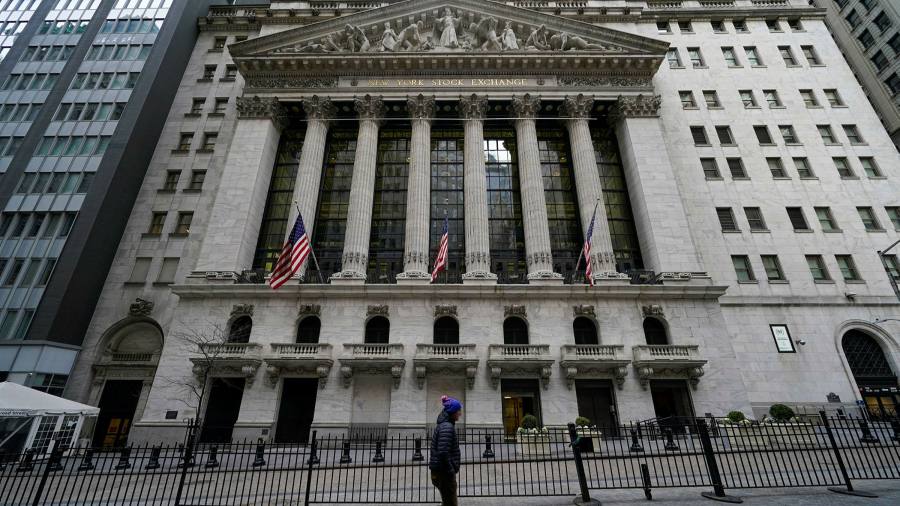US shares slumped on Thursday, closing out their worst quarter because the begin of the coronavirus pandemic, beneath strain from the conflict in Ukraine, excessive inflation and what’s anticipated to be an aggressive run of rate of interest rises.
The benchmark S&P 500 index fell 4.9 per cent over the three months to the top of March, whereas the tech-heavy Nasdaq Composite declined 9.1 per cent.
It was the weakest quarter for each, and likewise the primary quarter of losses for the S&P 500, because the first quarter of 2020.
“There are loads of good causes for a down quarter,” mentioned Lou Brien, a strategist at DRW Buying and selling. “Irrespective of which method you flip, there may be extra uncertainty. Which method will the conflict in Ukraine flip? How will the Fed conduct coverage?”

US Treasury bonds have additionally suffered dramatic losses this quarter: the two-year yield, which strikes inversely to cost, has risen by 1.58 share factors, essentially the most because the second quarter of 1984. The benchmark 10-year Treasury yield has elevated by 0.82 share factors, essentially the most because the first quarter of 2021.
The 2-year yield, which strikes with rate of interest expectations, has risen because the Fed elevated rates of interest by a quarter-point in March for the primary time since 2018. Roughly eight extra quarter-point cuts are priced on this yr as buyers guess that the central financial institution must transfer extra quickly than in earlier cycles to tamp down inflation.
A Bloomberg index of whole returns from Treasuries had fallen 5.6 per cent this yr as of Wednesday’s shut, placing it on track to put up its weakest quarterly efficiency because the inception of the index in 1973.
In credit score markets, iShares HYG, the biggest US high-yield ETF, fell by 5.4 per cent this quarter, its worst efficiency because the first quarter of 2020. The equal funding grade ETF is down 8.7 per cent this quarter, additionally the worst since 2020.
Asian shares adopted the US decrease on Friday morning, with Hong Kong’s Cling Seng index falling as a lot as 2 per cent and Japan’s Topix shedding 1.3 per cent in early buying and selling. Each indices later pared again losses, with the Cling Seng down 0.9 per cent and the Topix 0.1 per cent decrease in afternoon buying and selling.
European futures pointed to a blended begin, with contracts for the FTSE 100 down 0.1 per cent and Euro Stoxx 50 futures up 0.1 per cent.
Oil costs weakened on Thursday after the US introduced a “historic launch” of about 180mn barrels from its Strategic Petroleum Reserve in response to a world provide scarcity.

The Opec+ group of oil-producing nations mentioned it could intention to lift manufacturing by 432,000 barrels a day in Could, persevering with with the month-to-month plan agreed final yr to progressively change output reduce firstly of the pandemic.
Brent crude, the worldwide oil benchmark, settled at $107.91 a barrel, down 4.9 per cent, though oil costs have risen nearly 40 per cent in 2022.
The strikes got here as information confirmed that the US Federal Reserve’s most popular inflation gauge — the core private consumption expenditures index which strips out the unstable meals and vitality sectors — rose 0.4 per cent in February from the earlier month.
The determine marked a moderation from January, however took the annual enhance within the core PCE index to five.4 per cent, the quickest tempo in about 40 years.
Extra reporting by William Langley in Hong Kong
Unhedged — Markets, finance and powerful opinion
Robert Armstrong dissects crucial market tendencies and discusses how Wall Road’s greatest minds reply to them. Enroll right here to get the publication despatched straight to your inbox each weekday

